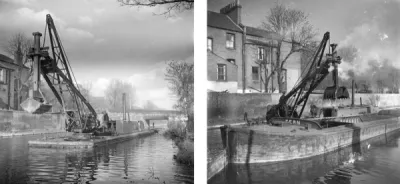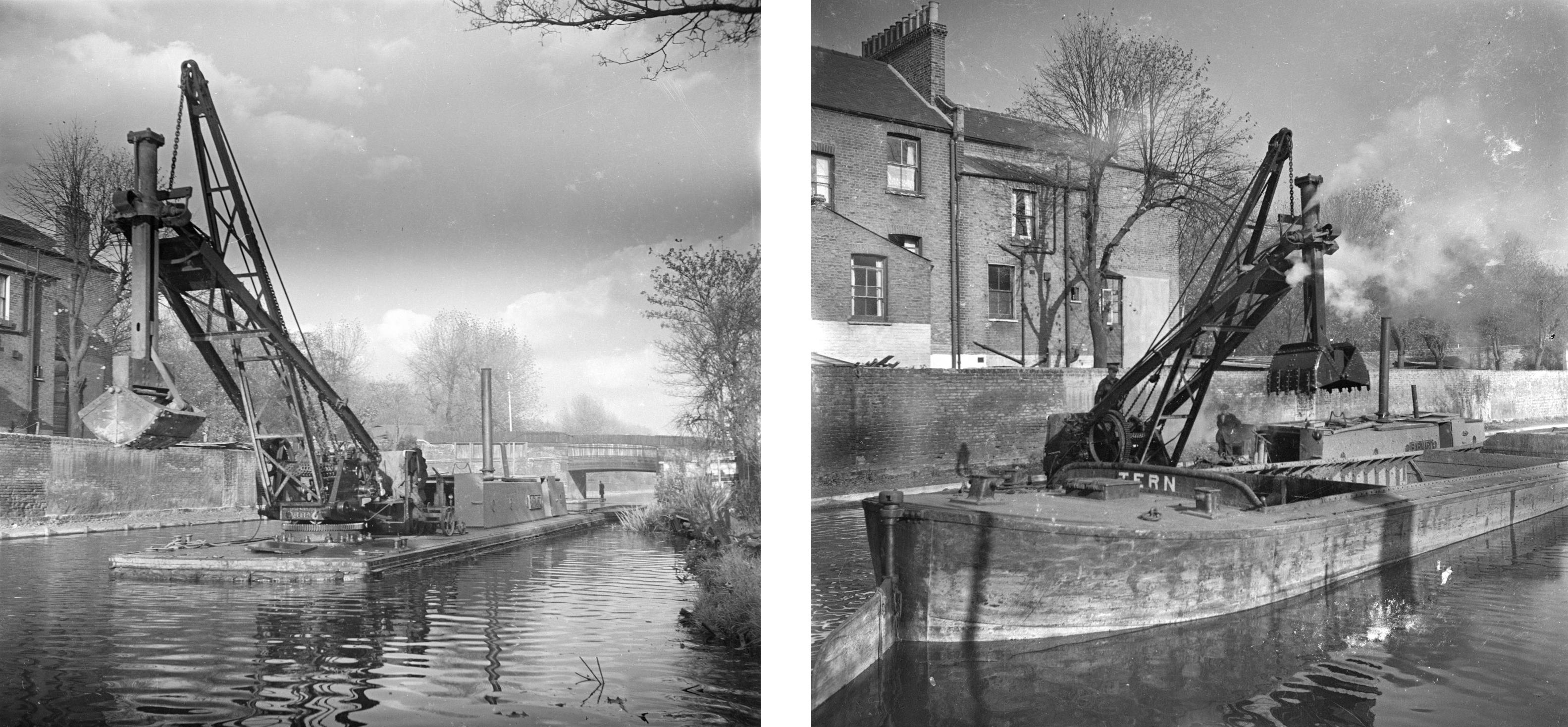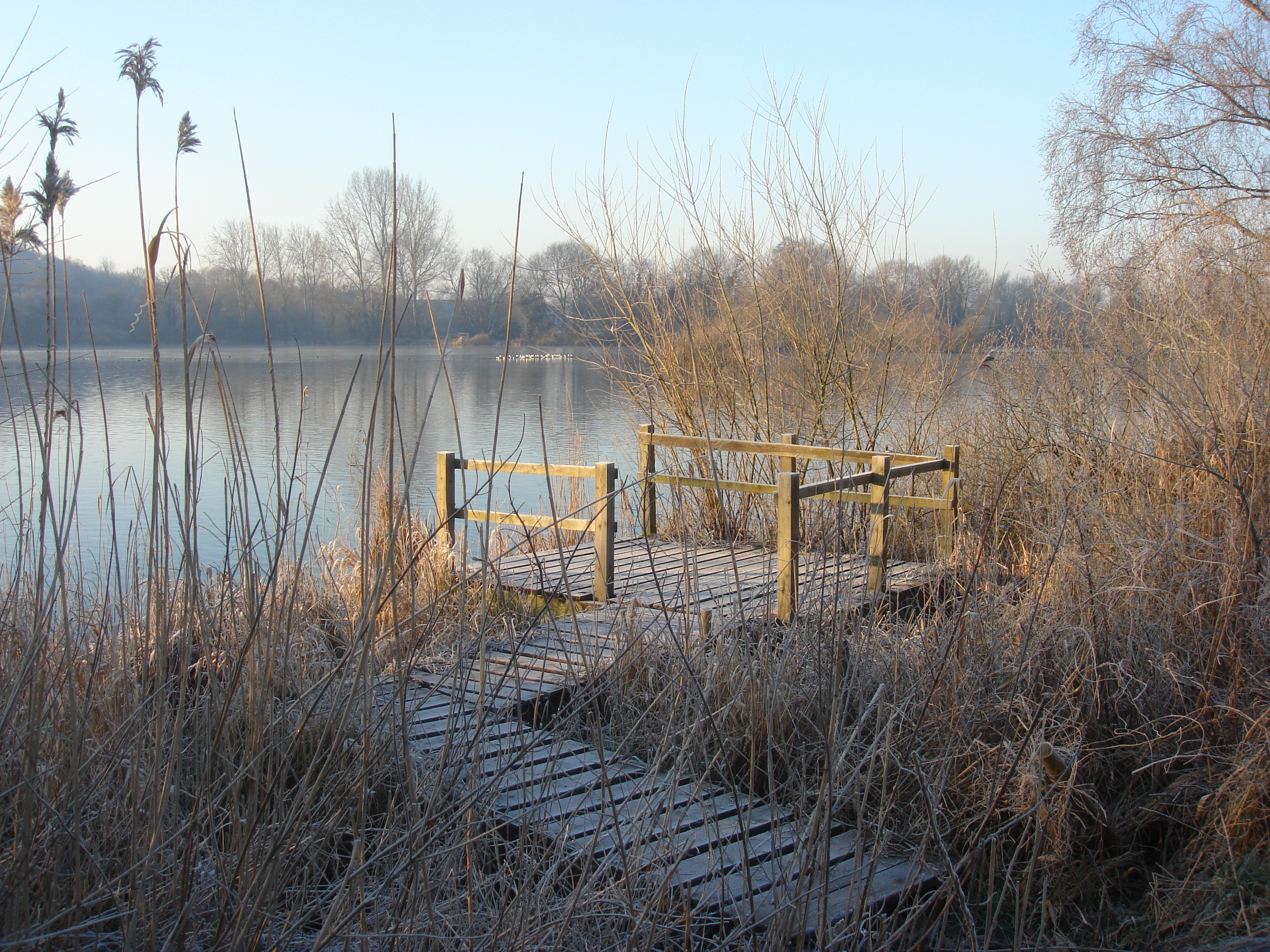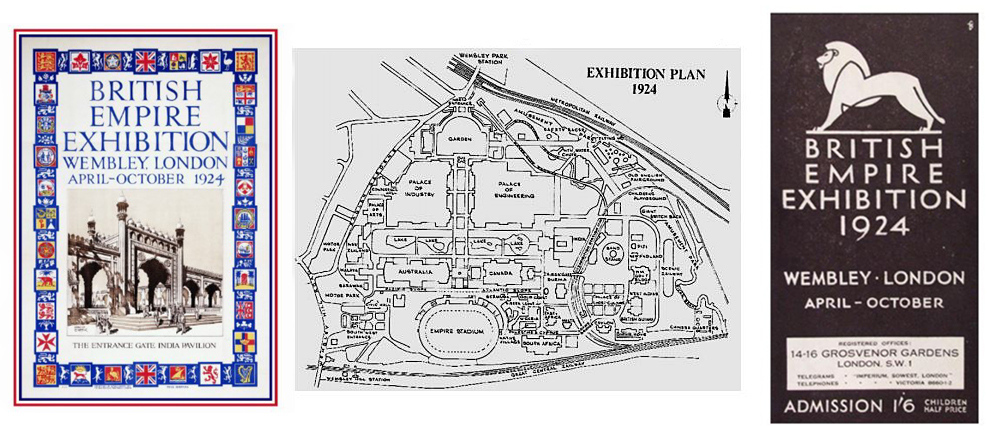Wembley Stadium and the Rickmansworth Connection
Sand and gravel in the early 1920s!


Around the early 1900's land between the River Colne and the Grand Union Canal was taken over by the Rickmansworth Gravel Company, formed in 1902. See above photos. Some dry pits were first dug in Croxley Hall Woods and later when the woods became exhausted, wet pits were dug near Croxley Hall Farm. Gravel extraction in Rickmansworth first started in the smaller Batchworth Lake but this ran out in 1912. The Bury Lake was then worked and the largest lake, Stockers, followed. Digging started in Stockers around 1920 and continued for some years finishing in the 1930’s.
Local man, Don Tilley writing in the Watford Observer in 1983, remembers the digging of the gravel over 60 years previously. ‘A great steam crane floating on a flat pontoon clanking and puffing dropped a grab into the water and came up with a dripping load of gravel’. As there was no means of crushing the stone on site it was sorted, the large stones were returned to the lake. The floating crane moved slowly around hence the circular pattern of the island ridges which explains the ridges and islands in Stockers Lake. Albert Sibley, another local man, says that his father and two uncles had worked for Rickmansworth gravel on the tugboat and crane.

The bulk of the gravel was dropped into wooden barges, built at Walker’s Yard (now Tesco), The gravel from Stockers was shipped out by barge through a channel cut on the tow path. The barges were then towed to Rickmansworth Gravel Company’s crushing facility at Croxley. Then the gravel was taken by train on the Metropolitan line to Wembley, to be used to build not only Wembley Stadium, but also the British Empire Exhibition of 1924.

Evidence is to be found in the Metropolitan Railway archive in the London Metropolitan archives (formally the GLRO), and this has also been verified by an article in the Brent Archives, which states ‘Just as it had been for the Stadium, reinforced concrete was the main material used, with thousands of tons of ballast (gravel) transported down the Metropolitan Railway from a huge gravel pit near Rickmansworth. (The biggest pit being Stockers)

The ground for the original stadium was cleared in February 1922, a considerable project in itself, with over 120,000 cubic yards of clay removed to level the site — and it took less than a year to complete the building of the stadium itself. The Empire Stadium as it was originally known was built as the centrepiece of the British Empire Exhibition of 1924. The Stadium was first opened to the public a year before on the 28th of April 1923 for the cup final between Bolton Wanderers and West Ham, this was known as the ‘White Horse’ final. PC George Scorey and his horse Billie helped to clear the pitch of spectators before the match could begin.
The stadium, designed by architects Sir John Simpson and Maxwell Ayerton, took just 300 days to complete. The engineer was Sir William Owen Williams. It cost £75,000 to build and 25,000 tons of ferro-concrete and a thousand tons of steel were used. King George the fifth opened the British Empire exhibition and this was the first time the Monarch had spoken on the radio

On the 29th of October 1938 Rickmansworth Gravel Company Ltd was once again granted the right to dredge for gravel at £150 per acre excavated per year. Fishing rights were granted to London General Omnibus Company Sports Association and two drains were allowed for Springwell British Table Water Company Ltd. During the Second World War the gravel was needed again and digging continued until in 1947 the dredging agreement expired. Rickmansworth and Uxbridge Valley Water Company purchased Stockers lake from Moor Park Ltd for £5000. The area involved was 93.753 acres. The water company wished to protect the aquifer, that is the water contained in the chalk and gravel below the lake and now a precious resource. A well and pumping station were built on the south side of the lake. The company became Rickmansworth Water Company again in 1985 reverting to its original 1884-5 name, now the Three Valleys Water PLC which is part of Affinity Water.
Les Mead 10-05-21
Sources of Information
Brent Archives. The Wembley Story - Part 3
Rickmansworth Historical Society Newsletter no 50 Brian Morgan
Metropolitan Railway archive in the London Metropolitan Archives (formally the GLRO) Chris Hillier.